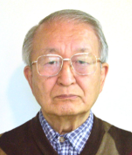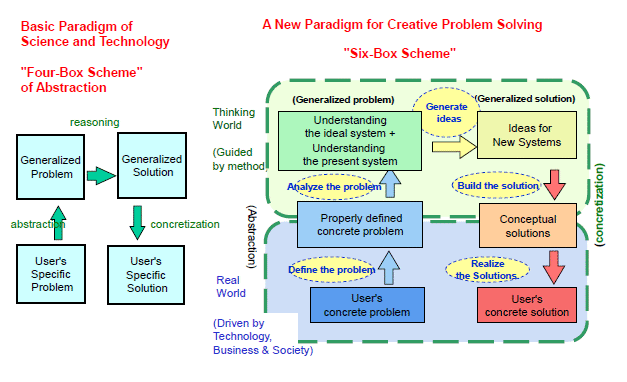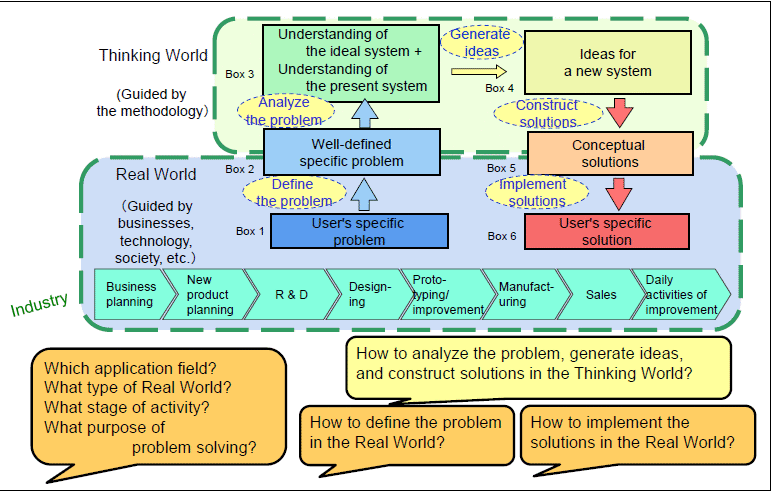Updated: 19 February 2022

Toru Nakagawa (OGU, WTSP Project Leader)
"TRIZ Home Page in Japan":
http://www.osaka-gu.ac.jp/php/nakagawa/TRIZ/eTRIZ/
Dear TRIZ Colleagues and WTSP Members, 19 February, 2022,
Toru Nakagawa (OGU, WTSP Project Leader)
Six-Box Scheme for Creative Problem Solving (Nakagawa)
Hello, How are you, your family, and people in your country?
I have updated "TRIZ Home Page in Japan" today in English.
https://www.osaka-gu.ac.jp/php/nakagawa/TRIZ/eTRIZ/
-----------------------------------------------
[1] "Six-Box Scheme" for Creative Problem Solving in place of the "Four-Box Scheme of Abstraction"
in Science and Technology (Toru Nakagawa)
Here I rephrased the title of my original paper:
From the "Four-Box Scheme of Abstraction" in Science and Technology to the "Six-Box Scheme" for Creative Problem Solving
The paper has been presented in Japanese at Japan Creativity Society Conference on Oct. 3, 2021.
A full set of records (paper, slides, and video) were posted in Japanese on Dec. 10, 2021.
In English I posted a brief introduction and sent you an email announcement on Jan. 16, 2022.
English edition of the paper and the presentation slides are now posted both in HTML and in PDF in the Home Page.
Abstract of the paper is: Science and technology have the "Four-Box Scheme of
Abstraction" as the basic paradigm, and solve problems by applying them to models (theories) established in every field.
This is not effective for "Creative Problem Solving", where a new way of thinking (theory) itself is to be found.
Thus, various researches on "Creativity Methods" for Creative Problem Solving have made different approaches without a basic paradigm.
Among them, TRIZ and USIT have prepared for a new development.
The author introduced both of them, integrated the huge TRIZ into the concise USIT, and from the data-flow representation
of the USIT process obtained the "Six-Box Scheme".
Having shown many TRIZ/USIT problem solving cases in the "Six-Box Scheme", he is advocating the Scheme as a new
"Basic Paradigm of Creative Problem Solving".
Now that the Scheme has established the problem-solving process in the "Thinking World", the diversity of problem
situations in the "Real World" is the focus of research in future.
It would be meaningful to examine various Creativity Methods and reposition and integrate them in the "Six-Box Scheme".
Two figures are attached here for clarifying the points.
(1) "Four-Box Scheme" and "Six-Box Scheme" side by side.
-- I sent you this figure in my last email as well.
(2) Position of the "Six-Box Scheme" in the Real World.
-- The process of Creative Problem Solving is now pretty well guided with the "Six-Box Scheme",
and our research has to deal with a huge variety of issues we have in the "Real World",
I recognized and proposed this "Six-Box Scheme" 16 years ago, and my understanding
has become clearer and more convincing year after year.
The new paradigm will become widely known and effectively applied to a
wide variety of issues all over the world.
Let's work Together ! Connected !!
Looking forward to hearing from you,
Best wishes.
Toru
-----------------------------------------------------------------
E-mail: This email address is being protected from spambots. You need JavaScript enabled to view it. [Main email address. for receiving.]
This email address is being protected from spambots. You need JavaScript enabled to view it. [for sending]
Editor of the "TRIZ Home Page in Japan":
http://www.osaka-gu.ac.jp/php/nakagawa/TRIZ/eTRIZ/">URL:http://www.osaka-gu.ac.jp/php/nakagawa/TRIZ/eTRIZ/
Director of CrePS Institute: Publication of "TRIZ Practices and Benefits" book series (in Japanese)
3-1-13 Eirakudai, Kashiwa, Chiba 277-0086, Japan.
----------------------------------------------------------------
